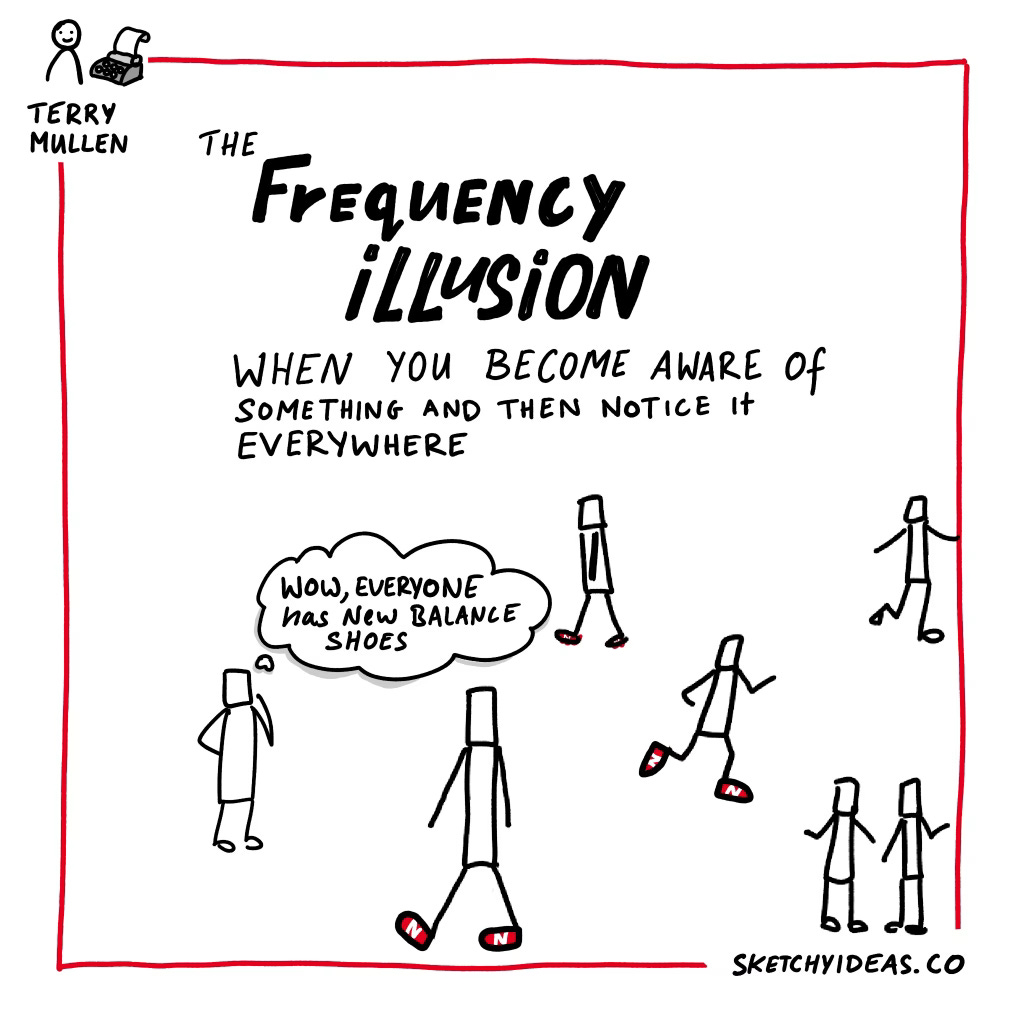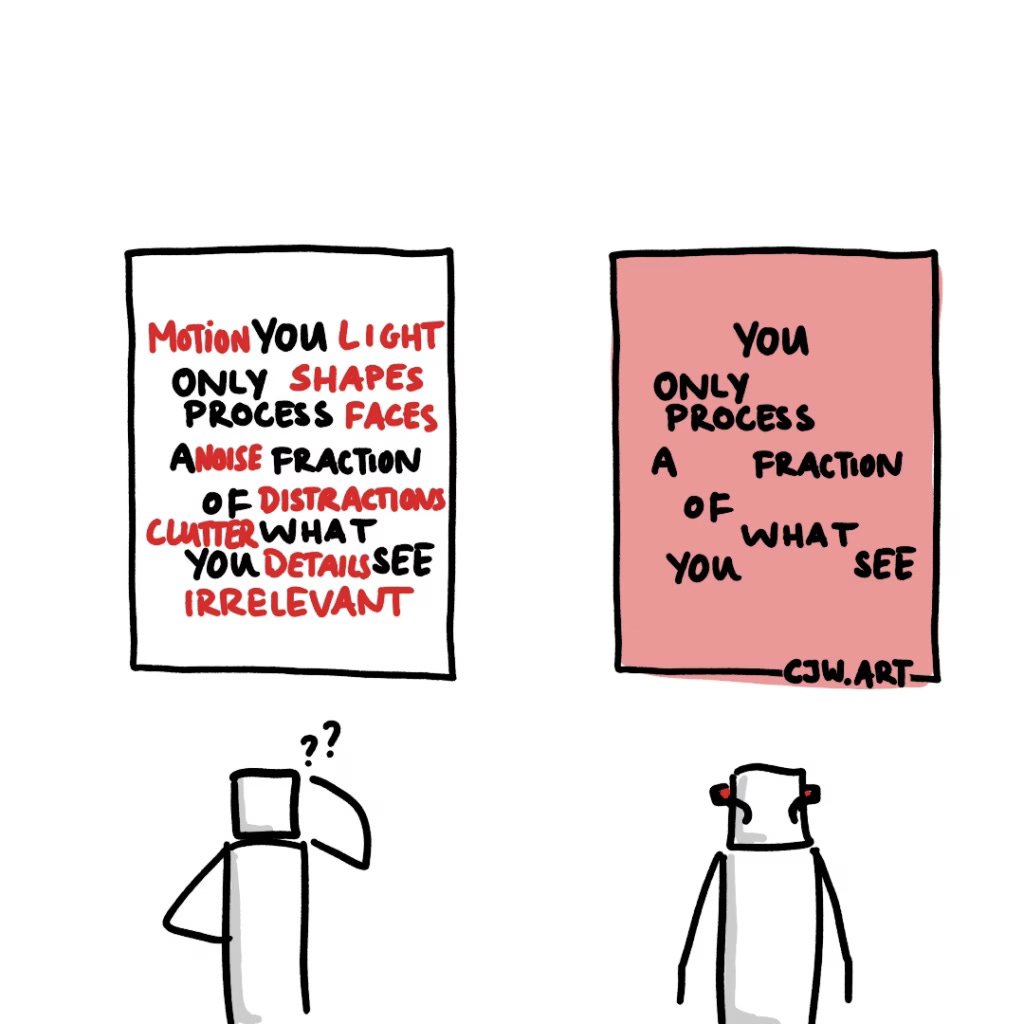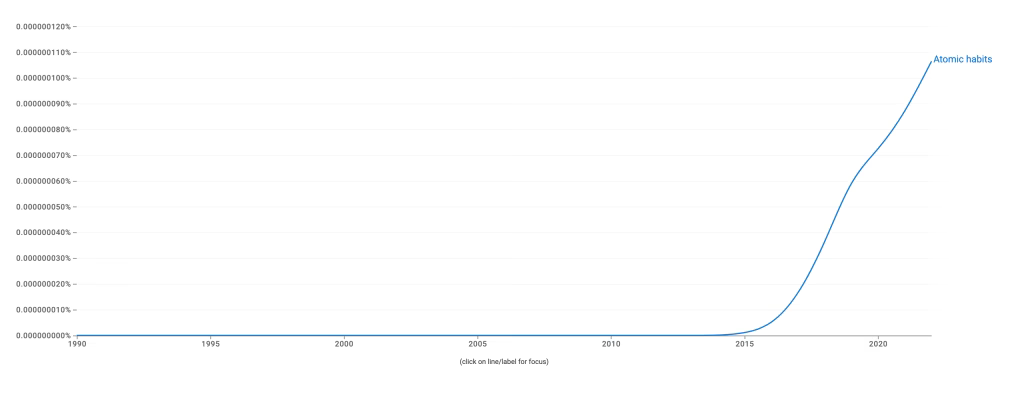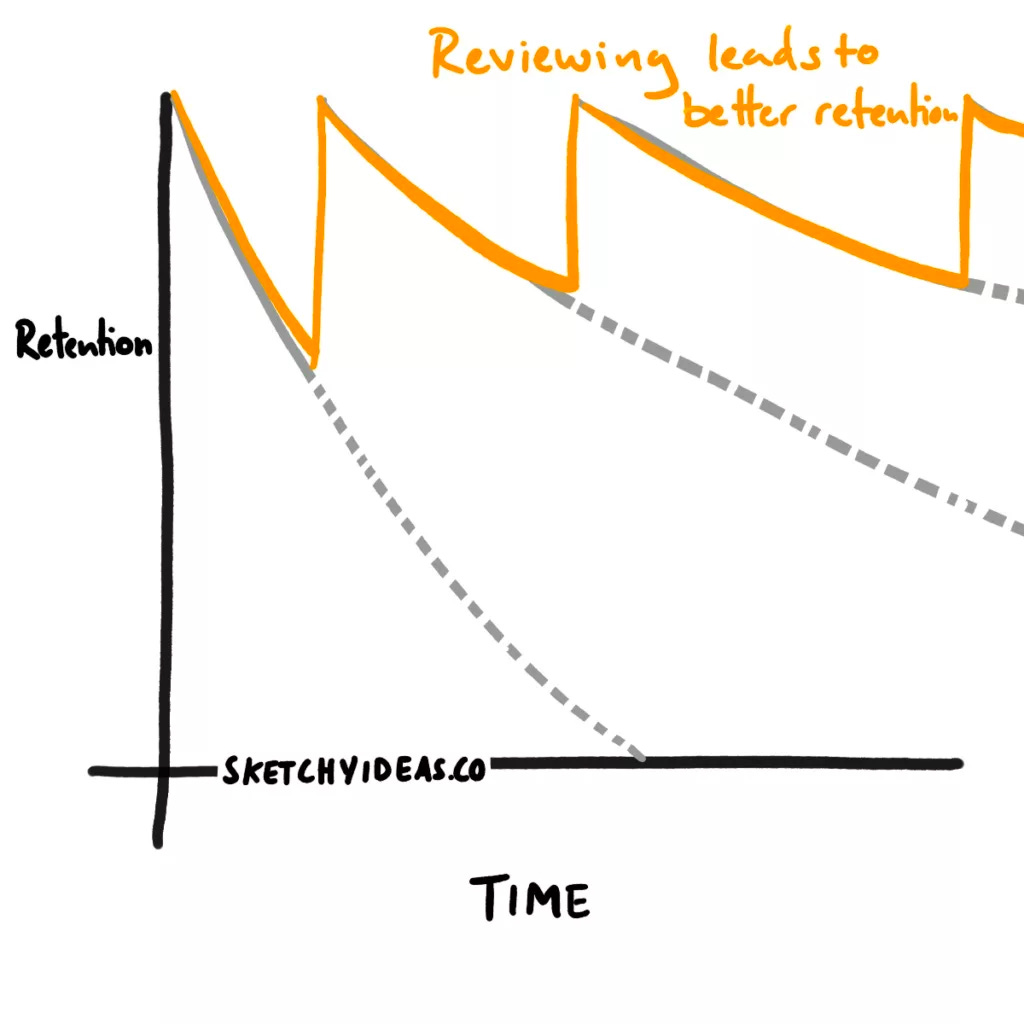The frequency illusion
Ever wondered why you a new idea, word, or object is suddenly everywhere?
Hey everyone, I’m back from a not-so-short break, and I’m trying a different format. It’s a visual intro to a mental model/cognitive bias. I’ve been writing these for years over on my blog (here’s the whole mental model series), and now I’m sharing it right here too.
Have you ever seen an ad for a brand, and then all of a sudden, all your friends seem to have that brand? Or perhaps you hear a new word for the first time, and then you hear it again that same week? These are examples of the frequency illusion (sometimes called the Baader-Meinhof phenomenon).
In this article, I'll show you how understanding this cognitive bias can help you make better decisions and even leverage its effects to learn better.
Plus, you'll find out why I guarantee you'll hear more about the effect this week.
What is the frequency illusion?
The frequency illusion occurs when you become aware of something (such as a new word, fact or object) and then suddenly notice it everywhere. It's called the "Baader-Meinhof phenomenon" due to Terry Mullen reporting in the St. Paul Pioneer Press in 1994 that once he heard about the Baader-Meinhof German military group, he kept noticing it!
While this can occur in conjunction with a tipping point, where that idea or object does become more common, the Baader-Meinhof effect comes from an internal change.
Selective attention: We can't process all the information flowing at us, so we tune out some details. This is why we may be unaware of how many people have kids until we're thinking of having kids.
Confirmation bias: We look for information that confirms what we believe or suspect. If we encounter something new, we want more evidence it's true, so we keep looking for it (and that means we encounter it more).
Recency illusion: We often believe that something new to us is new to everyone. Even if an idea is centuries old, we can assume no one else has heard it because we hadn't heard it before. This means when we notice something "new" we believe it is new, not that it has been long present.
Now that you know what it is, here's why you should care about it.
Why does it matter?
At the most basic level, understanding the frequency illusion will help you understand why some words, concepts and things are suddenly everywhere. But there are some other reasons why it matters.
1. We overvalue the novel
We have a tendency to overvalue new things over established ideas.
The frequency illusion may make it seem like a new concept is more important, but that isn't necessarily correct. Instead, we need to vet it against our existing knowledge to make sure it is valid. This is why the lindy effect can be valuable.
2. It can help establish an idea or brand
If you want an idea to stick, you can increase your odds by suddenly being everywhere all at once.
This is a key tactic that authors promoting a book will use. Instead of going on a few podcasts, they will appear on as many as they can, so suddenly they seem to be everywhere.
Suddenly, everyone is talking about Atomic Habits or another idea that has just been coined.
3. We need to avoid confusing correlation with causation
During the COVID-19 pandemic, doctors believed the disease caused discolouring of toes as they saw a number of patients presenting with that symptom. In fact, it was actually just a coincidence, and the real data showed a low correlation. It was merely because of the large number of COVID-19 patients that it included those with other conditions.
This is an example of how we can see a pattern where none exists.
How to use the Baader-Meinhof effect in your life
The frequency illusion doesn't just have applications for marketing and manipulation; you can also use it for your personal development. Here's how.
1. Learn new words and ideas
The same cognitive processes that make you notice a new idea can help you remember it, too.
Space repetition works on the principle of encountering a new word or concept at lengthening intervals, increasing your ability to recall it. The key here is to force encounters with that new idea early on (such as rereading notes, using flashcards, etc.).
But spaced repetition has its limits, and there's a more natural way you can mimic the effects. Instead of a heavily systematised review process, try exploring the idea more and finding what else it is connected to. This will provide repeated exposure, but it will do it through more contexts.
2. Improve your decision-making with data
If you feel like something is "everywhere", don't just go with your gut. Find a way to get data to validate it, so you don't make an incorrect decision based on bad data.
Here's a simple rule: try to disprove a pattern you've noticed.
If you can't, that's a good sign it's real.
Have you experienced the frequency illusion?
The frequency illusion is both a reminder that the patterns we see may not be real and a tool to help make information stick.
Next time you encounter something new, get ready to see it everywhere. And don't forget to try spaced repetition techniques to help make ideas stick.
Leave a comment if you have an example of the Baader-Meinhof effect from your life.
Want to share ideas that matter to you? Sign up for this free email course to learn how to draw anything (sketchily) in just 5 days.
Or if you’d like me to sketch your ideas for you, check out my services.








Hey Chris! Love this also because I'm ruminating on a kind of opposite effect. I mean, what happened after a hype? Does the object of the hype lost its popularity or I just do not "see" it anymore or the algorithms stopped to push it in my feeds?
I notice this often when I learn a new word or phrase in German. I suddenly start hearing or reading it everywhere! I also do make a conscious effort myself to use new words so that they stick. Gotta love a bit of spaced repetition!